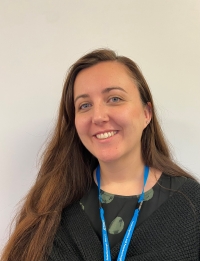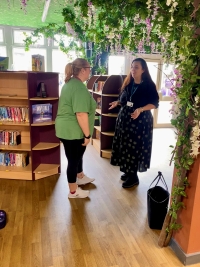Supporting children early – my role as a children’s occupational therapist
Chloe's story
Chloe Reid is a specialist children’s occupational therapist working in the community. Her work focuses on supporting children with diverse needs so they can thrive in their learning, play and social lives. It includes working with schools, especially Special Educational Needs Coordinators (SENCOs).
From promoting universal strategies like a new website toolkit for schools and offering a helpline with an occupational therapist, to providing targeted advice in drop-in clinics and training offers, Chloe’s team is making occupational therapy more accessible and responsive. Their creative, collaborative approach is reducing waiting lists, building confidence in school staff and families, and improving outcomes for children.
Chloe’s story shows how occupational therapy can provide the right support at the right time when it’s integrated into daily routines and aimed at helping children actively engage in the activities – or occupations - they want and need to do. It’s about helping children live the lives they want and making sure the people around them feel equipped to provide support.

I work in a community-based children’s occupational therapy team, supporting schools to help children thrive. We’re commissioned by health services, with some additional funding from the local authority, and although we’re not embedded in schools, we’ve found creative ways to work with them.
Children spend a lot of their time in school and their needs can vary between home and classroom. By collaborating with schools, we get to know children in their learning environment and understand the challenges they may face. That’s where we can make the biggest difference: embedding early support in schools.
We know that short visits and brief conversations with SENCOs aren’t always enough. Waiting lists for specialist support are growing, so we’ve focused on early intervention and empowering schools and families to feel confident in supporting children before things escalate.
We promote universal strategies that benefit all children, like sensory circuits and handwriting strategies, and targeted advice tailored to individual needs. These approaches help children every day, not just during therapy sessions.
Our team has developed an occupational therapy guide for SENCOs, packed with practical resources and signposting, and we offer training to schools. We also run a helpline for SENCOs, teachers and families - no referral needed. It’s a space to talk things through, get reassurance and try universal strategies straight away. Often, that’s enough to avoid a referral altogether.
Creative solutions that work
We’ve adapted how we work to meet schools need. Fixed meetings didn’t work, so we now offer flexible booking. That simple change made OT more accessible and responsive.
One SENCO called about a specific child, but our conversation revealed a wider issue with the school’s sensory circuits. She joined our training, came back with more questions, and we offered a specialist assessment. Because the school had already laid the groundwork, the child got the support they needed quickly.
Training SENCOs means referrals are more focused and timely, waiting lists are shorter, and children get help sooner.

Preparing for the future
We’ve introduced school-based placements for OT students. They’re not there to assess, but to promote the role of occupational therapists and embed universal strategies into the everyday running of the school. They have long-arm supervision from our clinical team to support their learning. Even casual conversations can spark new ideas and lead to meaningful change.
Handwriting was a big area. Our students helped staff understand it’s not just about the letters - it’s about the child, the environment and the tools they use. That shift in perspective made a real difference.
Working together to support children
Occupational therapy brings a holistic lens. We see the whole child, their environment and their needs so we can support their regulation, engagement and participation in activities. When we work with schools, we help staff see children differently too. It’s not about adding more tasks, it’s about working as a team and using our strengths together.
One young girl we supported was a wheelchair user who wanted to go to a secondary school with her friends. It didn’t have the right facilities, but we worked with the school to make the adaptations she needed. She’s now thriving in the place she chose. That’s what OT is all about: helping children live the lives they want.